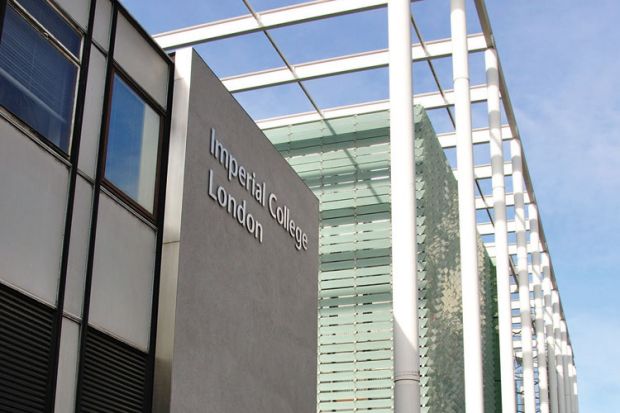View the top institutions
View the full list of success rates for institutions
Imperial College London has returned to the top of the sector’s list of the biggest winners from the research councils in 2013-14.
Times Higher Education’s annual analysis of research council data reveals that Imperial was awarded £114 million in 2013-14, compared with £103 million in 2012-13. In a year in which the research councils allocated 22 per cent less funding, the institution was one of only 10 among the awarded more than £10 million to experience a rise in the value of their awards.
Imperial has headed the list of grant winners for four of the past five years, although last year it was third. Donal Bradley, vice-provost for research, said that he was “delighted to see the dedication and hard work of our staff paying off in what remains a difficult funding climate”.
The value of awards for University College London, last year’s most successful grant winner, fell by 42 per cent, while the second-placed University of Cambridge recorded a 45 per cent fall, dropping it to fifth in the ranking.
David Price, vice-provost for research at UCL, said he remained happy with the institution’s performance, “particularly in some areas not reflected in these figures, such as doctoral training and some strategic schemes”.
The biggest proportional hikes in the value of awards were recorded by the University of Surrey, whose 85 per cent rise took its awards to £11 million, and King’s College London, whose 53 per cent rise took its awards to £40 million. Only three other institutions – the universities of Southampton (26 per cent), York (41) and Reading (29) – had increases of more than 20 per cent.
Chris Mottershead, vice-principal for research and innovation at King’s, said the institution had improved its support for grant applications, expanded in areas funded by the Engineering and Physical Sciences Research Council and won “a number of big awards that we are unlikely to replicate next year”.
Falls of more than 20 per cent in the value of awards were recorded by 12 of the top institutions. As well as UCL and Cambridge, these included the universities of Edinburgh (30 per cent), Nottingham (28), Warwick (29), Sheffield (26), Liverpool (26), Glasgow (37), Exeter (46), Newcastle (50) and Queen Mary University of London (39). The University of Bath fell the most, winning 58 per cent less than in 2012-13.
Institutional success rates have also largely been on the decline. Of the top institutions, only seven – Oxford, Manchester, King’s, Southampton, Bath, Queen Mary and the University of East Anglia – saw their success rates rise. King’s saw the biggest rise – 9 percentage points – reaching 34 per cent, while rates at the universities of Leeds and Liverpool fell by the same amount, to 23 per cent and 26 per cent respectively. Oxford recorded the highest rate at 36 per cent.
The declining success rates came despite a general fall in the number of applications. There were 9 per cent fewer grant applications in 2013-14 and only eight of the top institutions – Manchester, Edinburgh, Southampton, Glasgow, York, Leicester, Reading and Aberdeen – submitted more applications. Of those, only two – Manchester and Southampton – saw their success rate rise. The largest falls in application numbers were at Bath (30 per cent), Cambridge (22) and Imperial (19).
Register to continue
Why register?
- Registration is free and only takes a moment
- Once registered, you can read 3 articles a month
- Sign up for our newsletter
Subscribe
Or subscribe for unlimited access to:
- Unlimited access to news, views, insights & reviews
- Digital editions
- Digital access to THE’s university and college rankings analysis
Already registered or a current subscriber? Login





